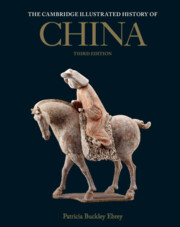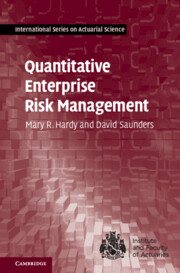Refine search
Actions for selected content:
36846 results in Cambridge Textbooks
33 - Elements of Quantum Information and Quantum Computing
- from Part IIa - Advanced Foundations
-
- Book:
- Quantum Mechanics
- Published online:
- 22 December 2022
- Print publication:
- 04 August 2022, pp 375-383
-
- Chapter
- Export citation
2 - The Mathematics of Quantum Mechanics 2: Infinite-Dimensional Hilbert Spaces
- from Part I - Formalism and Basic Problems
-
- Book:
- Quantum Mechanics
- Published online:
- 22 December 2022
- Print publication:
- 04 August 2022, pp 24-34
-
- Chapter
- Export citation
Credits
-
- Book:
- Connecting Discrete Mathematics and Computer Science
- Published online:
- 16 December 2022
- Print publication:
- 04 August 2022, pp xv-xvi
-
- Chapter
- Export citation
9 - The Heisenberg Picture and General Picture; Evolution Operator
- from Part I - Formalism and Basic Problems
-
- Book:
- Quantum Mechanics
- Published online:
- 22 December 2022
- Print publication:
- 04 August 2022, pp 106-115
-
- Chapter
- Export citation
21 - Application of Identical Particles: He Atom(Two-Electron System) and H2 Molecule
- from Part I - Formalism and Basic Problems
-
- Book:
- Quantum Mechanics
- Published online:
- 22 December 2022
- Print publication:
- 04 August 2022, pp 240-249
-
- Chapter
- Export citation
50 - Low-Energy and Bound States, Analytical Properties of Scattering Amplitudes
- from Part IId - Scattering Theory
-
- Book:
- Quantum Mechanics
- Published online:
- 22 December 2022
- Print publication:
- 04 August 2022, pp 557-565
-
- Chapter
- Export citation
57 - The Hartree–Fock Approximation and Other Occupation Number Approximations
- from Part IIe - Many Particles
-
- Book:
- Quantum Mechanics
- Published online:
- 22 December 2022
- Print publication:
- 04 August 2022, pp 632-640
-
- Chapter
- Export citation
27 - Dirac Quantization Condition and Magnetic Monopoles
- from Part I - Formalism and Basic Problems
-
- Book:
- Quantum Mechanics
- Published online:
- 22 December 2022
- Print publication:
- 04 August 2022, pp 301-310
-
- Chapter
- Export citation
5 - Mathematical Induction
-
- Book:
- Connecting Discrete Mathematics and Computer Science
- Published online:
- 16 December 2022
- Print publication:
- 04 August 2022, pp 215-266
-
- Chapter
- Export citation
31 - The Interpretation of Quantum Mechanics and Bell’s Inequalities
- from Part IIa - Advanced Foundations
-
- Book:
- Quantum Mechanics
- Published online:
- 22 December 2022
- Print publication:
- 04 August 2022, pp 350-360
-
- Chapter
- Export citation
6 - The Heisenberg Uncertainty Principle and Relations, and GaussianWave Packets
- from Part I - Formalism and Basic Problems
-
- Book:
- Quantum Mechanics
- Published online:
- 22 December 2022
- Print publication:
- 04 August 2022, pp 66-73
-
- Chapter
- Export citation
8 - The Harmonic Oscillator
- from Part I - Formalism and Basic Problems
-
- Book:
- Quantum Mechanics
- Published online:
- 22 December 2022
- Print publication:
- 04 August 2022, pp 91-105
-
- Chapter
- Export citation
1 - Grammatical Constructions, Semantic Classes, and Information Packaging
- from Part I - Introduction
-
- Book:
- Morphosyntax
- Published online:
- 04 August 2022
- Print publication:
- 04 August 2022, pp 3-31
-
- Chapter
- Export citation

The Cambridge Illustrated History of China
-
- Published online:
- 28 July 2022
- Print publication:
- 11 August 2022
-
- Textbook
- Export citation

Quantitative Enterprise Risk Management
-
- Published online:
- 28 July 2022
- Print publication:
- 05 May 2022
-
- Textbook
- Export citation
Preface
-
- Book:
- Construction Grammar
- Published online:
- 20 September 2023
- Print publication:
- 28 July 2022, pp xix-xx
-
- Chapter
- Export citation
2 - Usage-Based Construction Grammar
-
- Book:
- Construction Grammar
- Published online:
- 20 September 2023
- Print publication:
- 28 July 2022, pp 17-47
-
- Chapter
- Export citation
General Index
-
- Book:
- Construction Grammar
- Published online:
- 20 September 2023
- Print publication:
- 28 July 2022, pp 312-316
-
- Chapter
- Export citation
5 - Complex Phrasal and Clausal Constructions
-
- Book:
- Construction Grammar
- Published online:
- 20 September 2023
- Print publication:
- 28 July 2022, pp 177-235
-
- Chapter
- Export citation
Dedication
-
- Book:
- Construction Grammar
- Published online:
- 20 September 2023
- Print publication:
- 28 July 2022, pp ii-ii
-
- Chapter
- Export citation
